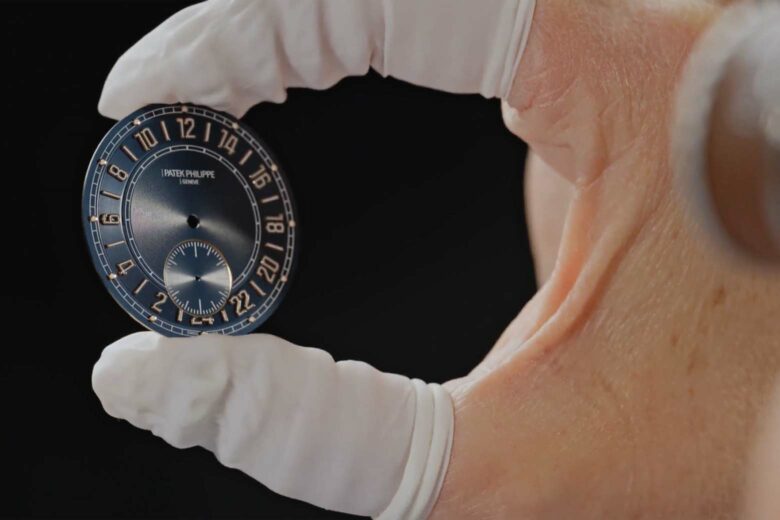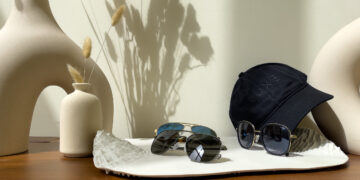We all wear them. We all love them. But very few know what makes a watch tick (pun intended).
As luxury watch enthusiasts and discerning individuals, we’ve spent years uncovering the best luxury watches (hint hint: see our Watch Buying Guide) and giving you the highlights. But if you want to do your due diligence, you have to know what boxes to tick.
You need to know the terminology—if only to sound cool when describing your most recent purchase.
You need a refresher course on the anatomy of a watch.
The anatomy of a watch
Watch Dial or Watch Face
The watch dial is the visible, front part of the watch’s design. Displaying the time and sometimes showcasing complications like date windows and moon phases, it sets the stage for how time is told.
Dial face

The dial face is simply the face of a watch. Beyond telling time, the dial face expresses the watch’s character and craftsmanship, with variations like sunburst, matte, guilloché, or patterned designs catering to diverse tastes and functions.
It can range from the simplistic elegance of a clean, unadorned surface to the complexity of skeleton dials that reveal the intricate workings beneath. Materials vary widely, from classic metal and enamel to innovative carbon fiber or mother-of-pearl, each adding a unique aesthetic and texture to the design.
Hands

The hands of a watch are used to tell the time, gracefully moving around the dial to indicate hours, minutes, and seconds.
Most timepieces come equipped with these three distinct hands: the hour hand, robust and succinct; the minute hand, elongated for precision viewing; and the slender, swift second hand for tracking each passing moment.
Among the diverse styles, Baton hands, also known as stick hands, offer a sleek, minimalist appeal. Breguet hands captivate with their elegant ‘moon tips,’ also referred to as Pomme hands. And cathedral hands, noted for their intricate geometric details and occasional skeletonized design, infuse a watch with a sense of grandeur and historical depth.
Hour Markers

Hour markers on a watch dial play the critical role of indicating the hours. These markers can vary vastly in style and material—from simple notches or dots to elegant Roman or Arabic numerals. Some of the more affluent labels even use diamonds or other precious stones to mark the hour.
While the primary function of hour markers is to enhance legibility, they also play a pivotal role in the watch’s design and aesthetic.
Minute Track

The minute track is a subtle yet essential feature on the watch dial. It is often delineated by small ticks or lines, encircling the edge of the face and enabling wearers to gauge minutes and seconds accurately at a glance. While some watches incorporate the minute track seamlessly into the main dial, others feature it as a distinct, contrasting ring for enhanced clarity.
Subdials

Subdials, also known as auxiliary dials, are optional smaller dials located within the main watch dial. They serve various functions, adding depth and complexity to a timepiece. Commonly used in chronographs, subdials can track elapsed seconds, minutes, and hours for timing events. Other functions might include displaying the date, moon phase, or providing a second time zone.
External Watch Parts
The external parts of a watch are the visible components that define its design and functionality. Each external watch part, from the protective case to the functional crown and the aesthetic dial, plays a pivotal role in the watch’s overall performance and appeal.
Case

The case of a watch is the protective outer shell that houses the watch’s internal components, including the movement, dial, and hands. It plays a crucial role in safeguarding the mechanism against dust, moisture, and impact.
Watch cases can be crafted from a variety of materials such as stainless steel, gold, titanium, ceramics, and even plastic, each offering different levels of durability, style, and weight. The size and design of the case also significantly influence the watch’s overall aesthetic, with shapes ranging from traditional round to square, rectangular, and other avant-garde forms. Check our guide to watch case shapes for more information.
Crystal

The crystal of a watch is the transparent cover that protects the dial and the hands. It’s a crucial component that allows clear visibility while safeguarding the watch’s face from dust, water, and physical damage.
Crystals can be made from different materials, each offering its own balance of clarity, scratch resistance, and durability. The most common types include sapphire crystal, known for its exceptional hardness and scratch resistance; mineral glass, which offers a good compromise between durability and cost; and acrylic, which is lightweight and less prone to shattering but more susceptible to scratches.
Crown

The watch crown is a small, often knurled knob located on the outside of a watch case, typically at the 3 o’clock position. It serves multiple vital functions: winding the mainspring of mechanical watches, setting the time and date, and in some models, operating other mechanical features.
Typically, the watch crown can be pulled out to different positions, each allowing for the adjustment of various functions. For water-resistant watches, the crown may screw down to seal the case against moisture and dust ingress.
Bezel

The watch bezel is the ring that surrounds the watch crystal, often serving both functional and aesthetic purposes. It can be made from various materials, including metal, ceramic, or plastic. And it may be fixed or rotating.
Rotating bezels are particularly common in sports and diving watches, where they perform specific functions such as tracking elapsed time, measuring speed, or indicating a second time zone.
Lugs

Lugs, sometimes called watch horns, are the protruding extensions at the top and bottom of a watch case, serving as the anchor points for attaching the strap or bracelet. They play a crucial role in determining the watch’s fit and comfort on the wrist, as well as its overall aesthetic.
Lugs can vary in shape and style. The most common type is straight and simple, although you also get shrouded, hooded, Speedy, and Explorer lugs.
Strap or Bracelet

The watch strap or bracelet is the component that secures the timepiece to the wearer’s wrist. It plays a significant role in the comfort, style, and overall appearance of the watch.
Straps can be made from a variety of materials, including leather, rubber, fabric, and synthetic materials, offering different looks and levels of durability.
Bracelets, on the other hand, are typically made from metal, such as stainless steel, titanium, gold, or a combination thereof. They consist of linked pieces and often feature a clasp mechanism for adjustment and secure closure.
Check our guide about the types of watch straps and bracelets to learn more.
Internal Watch Parts
The internal parts of a watch work in harmony to ensure accurate timekeeping and functionality.
Movement

The movement, often referred to as the “engine” of the watch, is the internal mechanism that powers its timekeeping functions.
It can be mechanical—requiring manual winding or automatic winding through the wearer’s natural wrist movements—or quartz, powered by a battery. Mechanical movements are prized for their craftsmanship and aesthetic appeal, while quartz movements are celebrated for their accuracy and low maintenance.
The movement drives the hands around the dial and powers any additional features such as calendars, chronographs, or moon phase displays.
Frequently asked questions about the parts of a watch
The main body of a watch is called the case. It serves as the protective housing for the watch’s internal components, including the movement, dial, and hands. Crafted from various materials like stainless steel, titanium, gold, or ceramics, the case ensures durability and style while also providing water resistance.
The beating heart of a watch is called the movement or caliber. It is the internal mechanism that powers the watch, driving its timekeeping functions. The movement can be mechanical, requiring manual winding or automatic winding from the wearer’s movements, or quartz, powered by a battery.
The bezel is the ring surrounding the watch’s crystal, serving both functional and aesthetic purposes. It can be fixed or rotating, made from materials like metal, ceramic, or plastic. Fixed bezels may feature decorative elements or engravings, while rotatable bezels are used in sports watches for tracking elapsed time, measuring speed, or marking a second time zone.











